QNAP TS-632X NAS Drive Review – REAL Value?
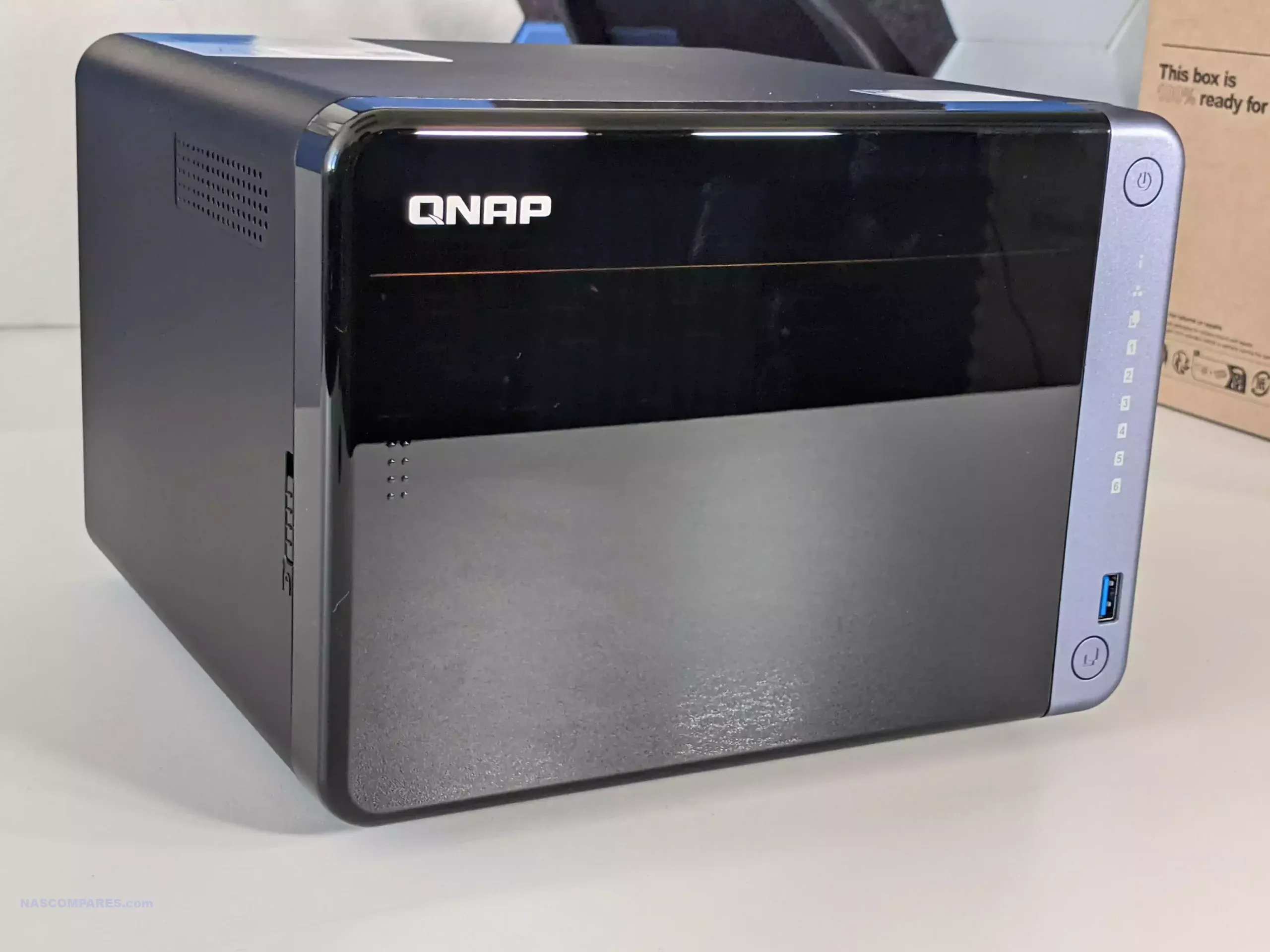
With the ongoing development of private NAS servers, many users are seeking to move their personal or business data away from third-party cloud services. You might expect that each new generation of NAS devices would be increasingly powerful. While it’s true that there are more capable devices on the market, there is also a growing demand for efficiency. As we approach a point where electricity bills are a concern, alongside the powerhouse units that make headlines, we see systems designed to offer maximum performance on a minimal hardware footprint. These products promise lower price tags, reduced running costs, and robust support, making them attractive for a wide range of users.
Into this evolving landscape steps the QNAP TS-632X, an ARM-powered NAS that boasts dual 10GbE connectivity, support for ECC memory, and PCIe expandability. The idea that this system can manage even half of what it promises while running on a power-efficient ARM CPU is impressive. We first encountered this system at the Computex 2024 trade show in Taipei, where it immediately caught our eye due to its impressive feature set. But now that it’s available, does it live up to the hype? Is this lean, mean 10G NAS machine capable of handling your data storage needs? Let’s dive in and find out.
QNAP TS-632X Review – Quick Conclusion
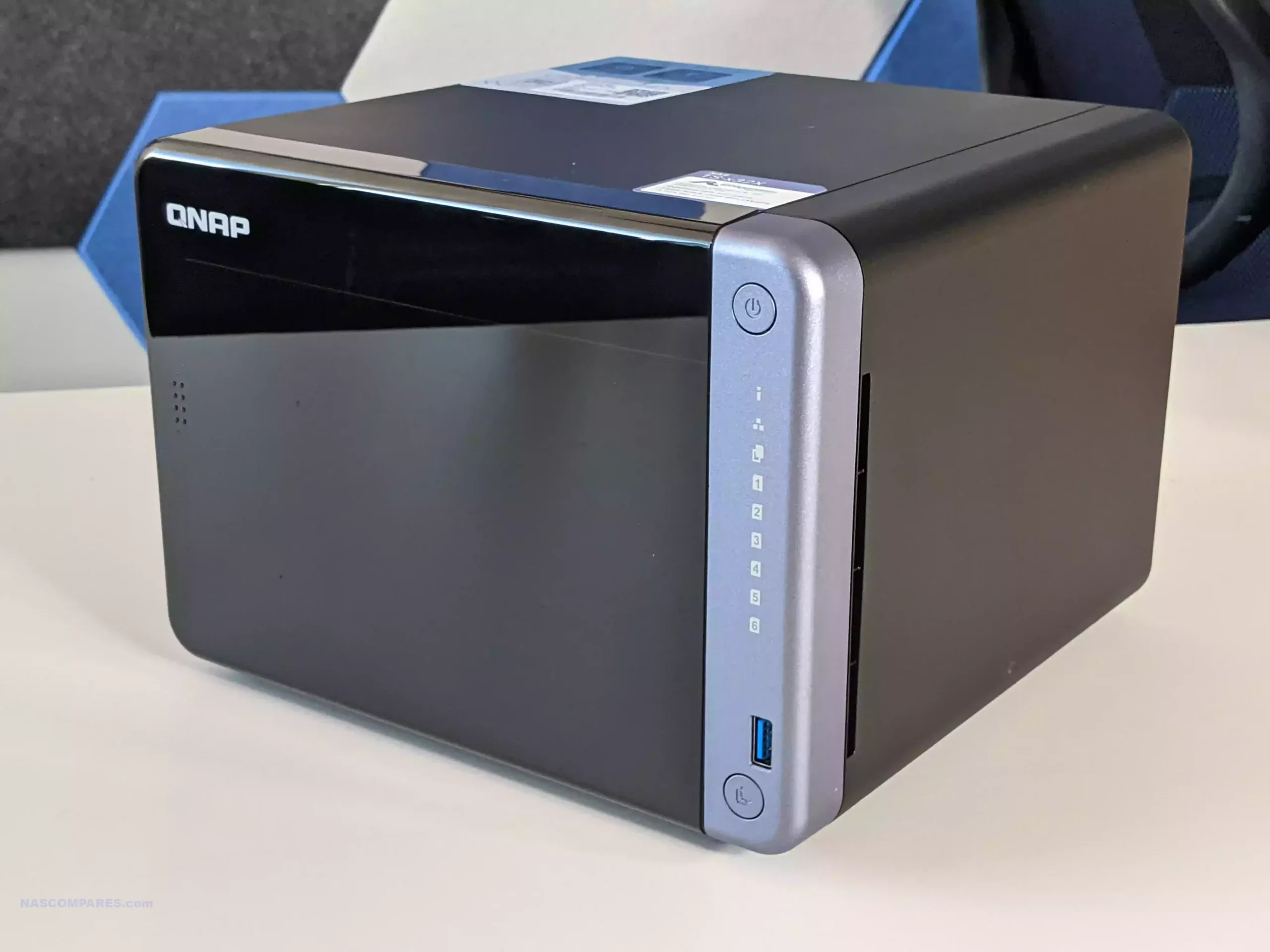
The QNAP TS-632X is not a NAS that will win awards for sheer processing power, but that was never its purpose. As one of the most capable ARM-powered NAS devices available, it provides a compelling mix of features at a competitive price point. For $699-$749, you get a 6-bay NAS with dual 10GbE ports, support for ECC memory, and PCIe expandability, offering a scalable solution perfect for small to medium businesses or advanced home users who need high-speed data access. However, there are some caveats. The lack of ECC memory in the base model feels like a missed opportunity, and the ARM processor does limit some high-end applications. Write speeds could also be better, but as long as you’re aware of these limitations, the TS-632X delivers on its promises without overextending itself. With thoughtful design and a focus on energy efficiency, it’s a refreshing option in a market crowded with less impressive ARM-based devices. For users who need efficient, reliable storage with excellent network capabilities and scalability, the TS-632X is a solid choice. It may not handle the most demanding tasks, but it excels in providing consistent, reliable performance for everyday NAS functions, making it a worthy addition to any small office or home setup.
Where to Buy a Product





![]()
![]()

VISIT RETAILER ➤






![]()
![]()

VISIT RETAILER ➤






![]()
![]()

VISIT RETAILER ➤






![]()
![]()

VISIT RETAILER ➤
 DEAL WATCH – Is It On Offer Right Now? DEAL WATCH – Is It On Offer Right Now?These Offers are Checked Daily
|
QNAP TS-632X NAS Review – Packaging
Typically, I would gloss over packaging details in reviews since most users don’t find them particularly relevant, and packaging is usually a one-time interaction before it ends up as waste. However, QNAP’s approach to the TS-632X packaging is worth noting. The company has made significant strides in using eco-friendly materials, which are entirely recyclable. From the protective framework to the wrapping materials, everything is designed to be environmentally friendly.

This shift is a notable improvement because one of the main challenges with recyclable packaging is durability. Recyclable materials often can’t withstand the rigors of international shipping, leading to potential damage to the internal hardware. Such damage might not be immediately apparent, potentially causing long-term data loss if issues arise days, weeks, or even months after initial use. Kudos to QNAP for investing in robust, recyclable packaging that still protects the device during transit.

QNAP TS-632X NAS Review – Hardware Specifications
Before diving into the performance and capabilities of the TS-632X, it’s essential to understand what this device offers in terms of hardware. Here’s a detailed look at the key specifications:
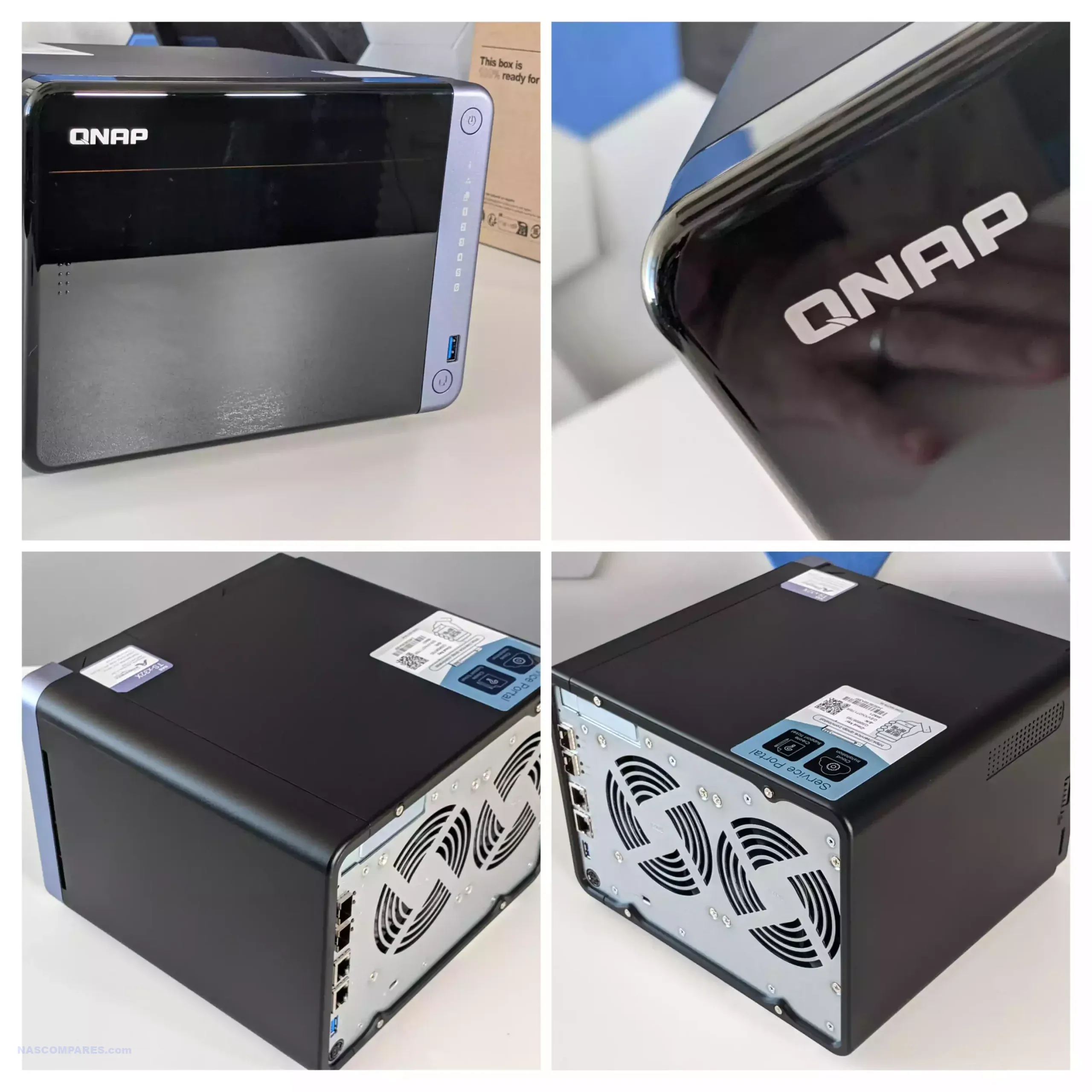
| Component | Specification |
|---|---|
| CPU | AnnapurnaLabs Alpine AL524, Quad-core 2.0GHz |
| Architecture | 64-bit ARM |
| Memory | 4 GB DDR4 SODIMM (Upgradeable to 16 GB) |
| ECC Memory Support | Yes (not included in base model) |
| Flash Memory | 512 MB (Dual boot OS protection) |
| Drive Bays | 6 x 3.5-inch SATA 6Gb/s, 3Gb/s |
| Drive Compatibility | 3.5-inch SATA HDD, 2.5-inch SATA HDD/SSD |
| Hot-swappable | Yes |
| Ethernet Ports | 2 x 10GbE SFP+, 2 x 2.5GbE |
| USB Ports | 2 x USB 3.2 Gen 1 (5Gbps) |
| PCIe Slots | 1 x PCIe Gen 3 x4 |
| Form Factor | Tower |
| Dimensions (HxWxD) | 226.5 x 235 x 165 mm |
| Weight | Net: 2.5 kg, Gross: 4.96 kg |
| Power Supply | 120W adapter (12VDC), 100-240VAC |
| Cooling | 2 x 90mm fans, 12VDC |
| Warranty | 2 years (extendable up to 5 years) |
QNAP TS-632X NAS Review – Performance and Features
The TS-632X stands out primarily due to its impressive network connectivity. Equipped with two 10GbE SFP+ ports and two 2.5GbE Ethernet ports, it provides up to 25Gbps of network bandwidth straight out of the box.

This high level of connectivity is vital for businesses that need to handle multiple simultaneous data streams or require high-speed data transfers. Moreover, the presence of a PCIe slot allows users to install additional network cards, further enhancing the system’s scalability. This feature makes the TS-632X highly adaptable, enabling users to upgrade their setup as their network demands grow.
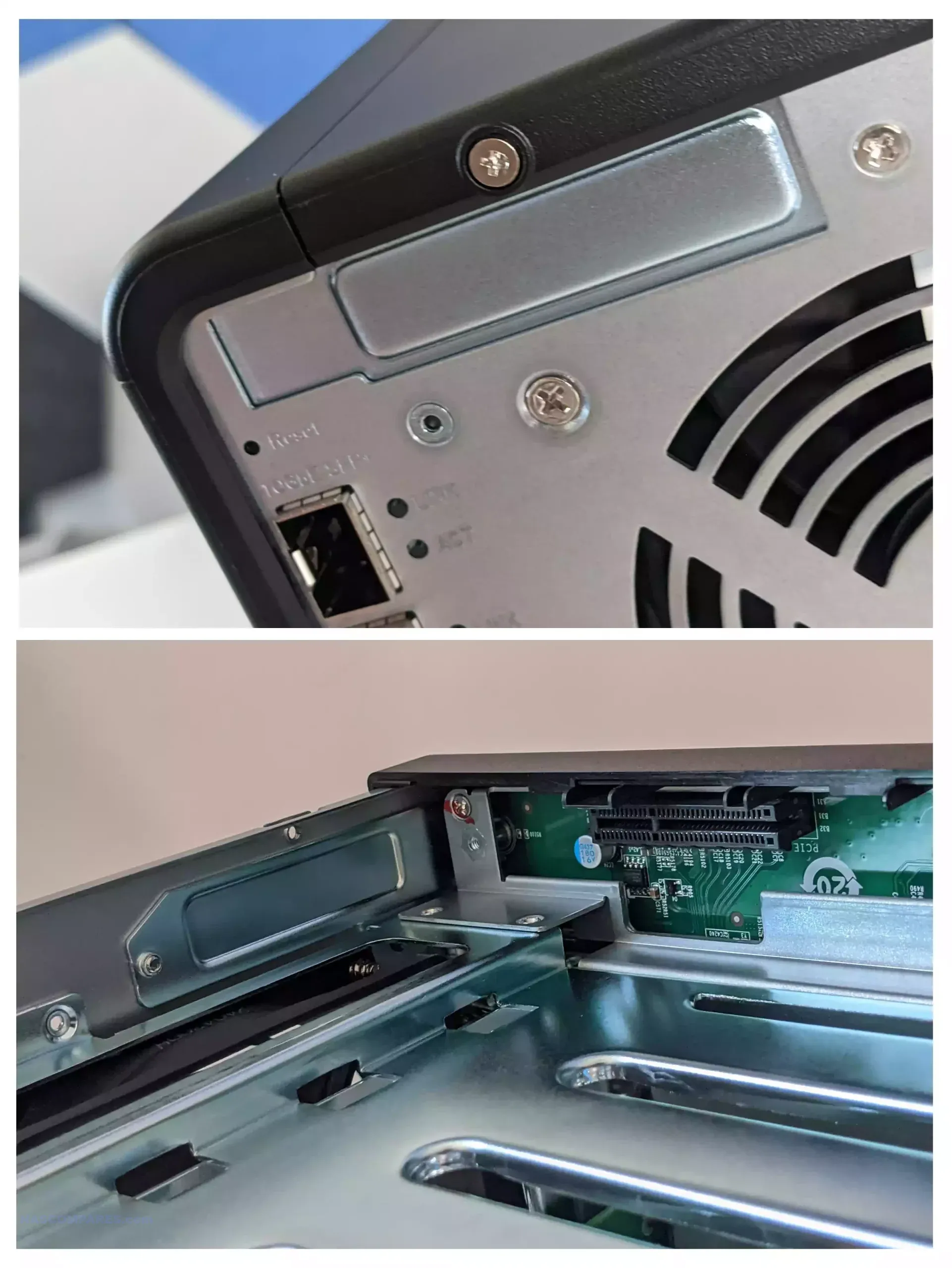
Powered by an Annapurna Labs AL524 ARM quad-core processor running at 2.0GHz per core, the TS-632X is designed to be power-efficient while still providing adequate performance for typical NAS tasks. This ARM processor is not aimed at heavy computational tasks or graphic-intensive applications but is optimized for efficient data handling and low power consumption, making it ideal for 24/7 operation.
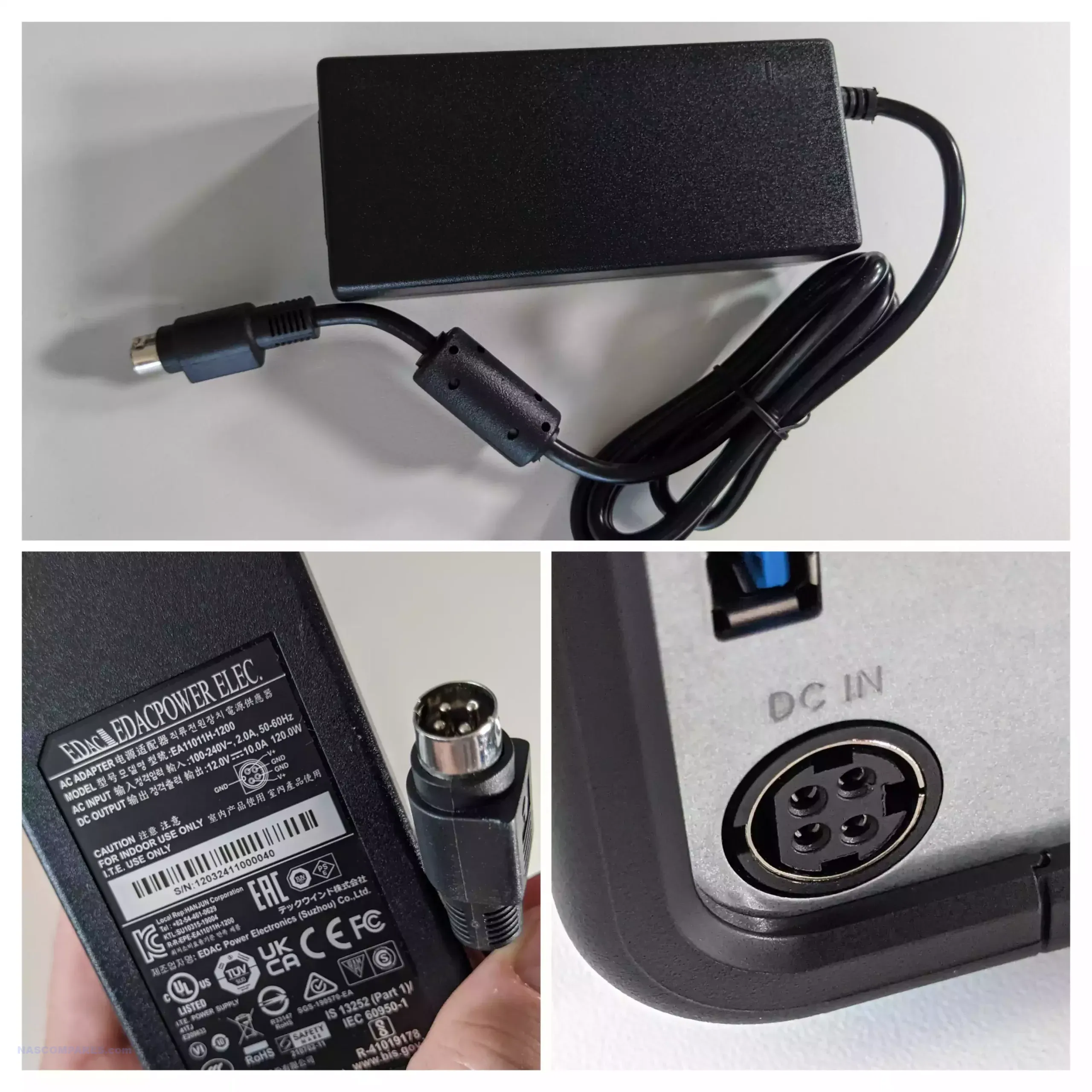
In tests with four 24TB drives in RAID 5, the device showed impressive energy efficiency, consuming just 26.2 watts on average during idle periods and around 54-55 watts under heavy load. These figures are excellent for a 6-bay NAS, ensuring that it remains cost-effective to run even in demanding environments.
Limitations of the ARM Processor?
While the TS-632X performs well for most NAS tasks, it’s important to recognize the limitations of its ARM processor. This system is not designed for heavy-duty applications like virtualization, Plex transcoding, or running resource-intensive Docker containers. Users looking for a NAS that can handle these tasks might need to consider a model with an x86 processor. However, for file storage, data backup, and light application hosting, the TS-632X offers robust performance without excessive power consumption.
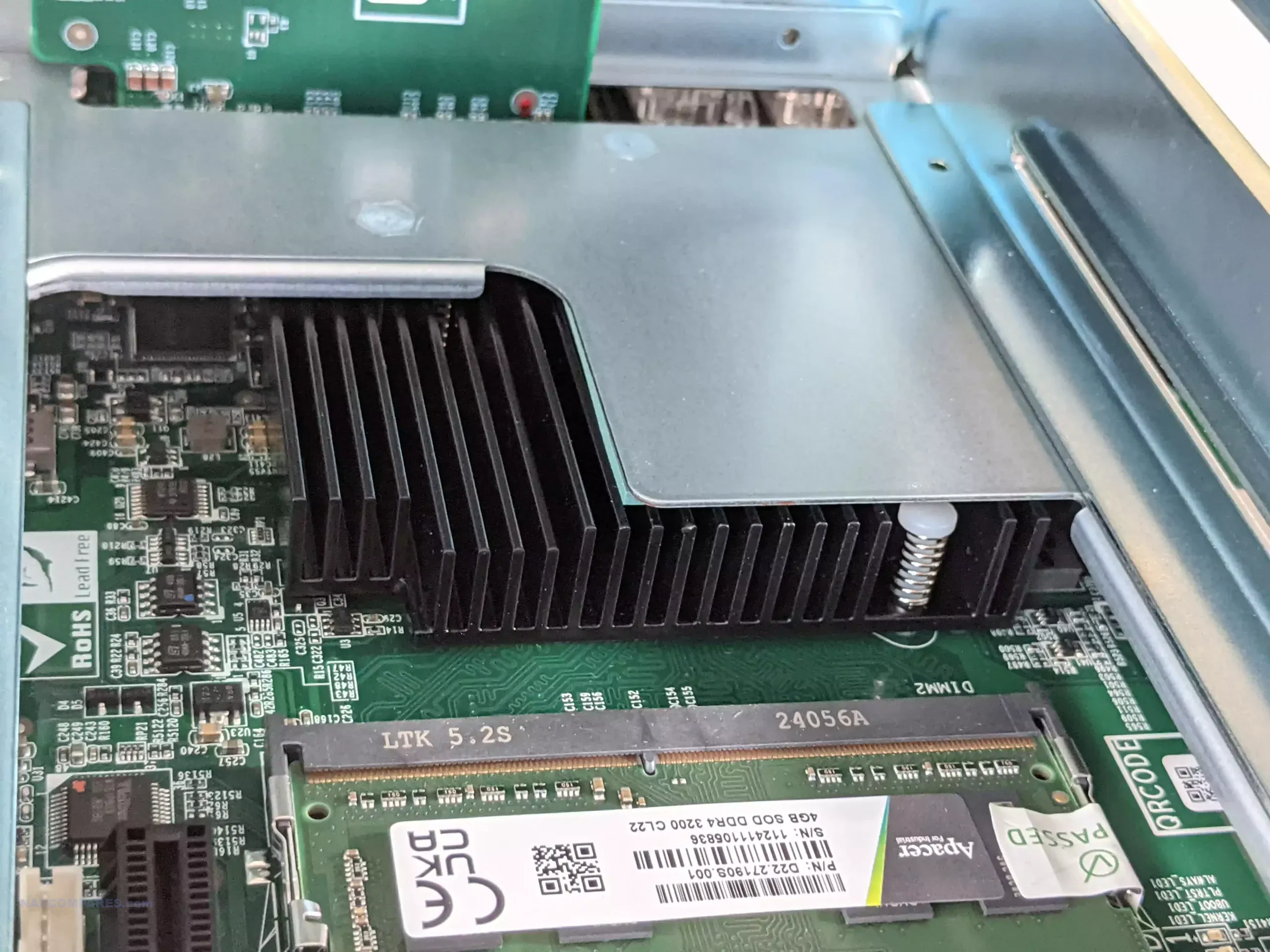
Memory Configuration?
The TS-632X comes with 4GB of DDR4 RAM, which is sufficient for standard NAS operations. However, it can be upgraded to 16GB, allowing it to handle more demanding applications or a higher number of simultaneous users. A notable feature is its support for ECC (Error-Correcting Code) memory, which is rare in ARM-based systems. ECC memory is crucial for environments where data integrity is paramount, as it helps detect and correct internal data corruption.

Unfortunately, the base model does not come with ECC memory, which feels like a missed opportunity. For a small additional cost, QNAP could have included ECC RAM, enhancing the system’s reliability right out of the box.
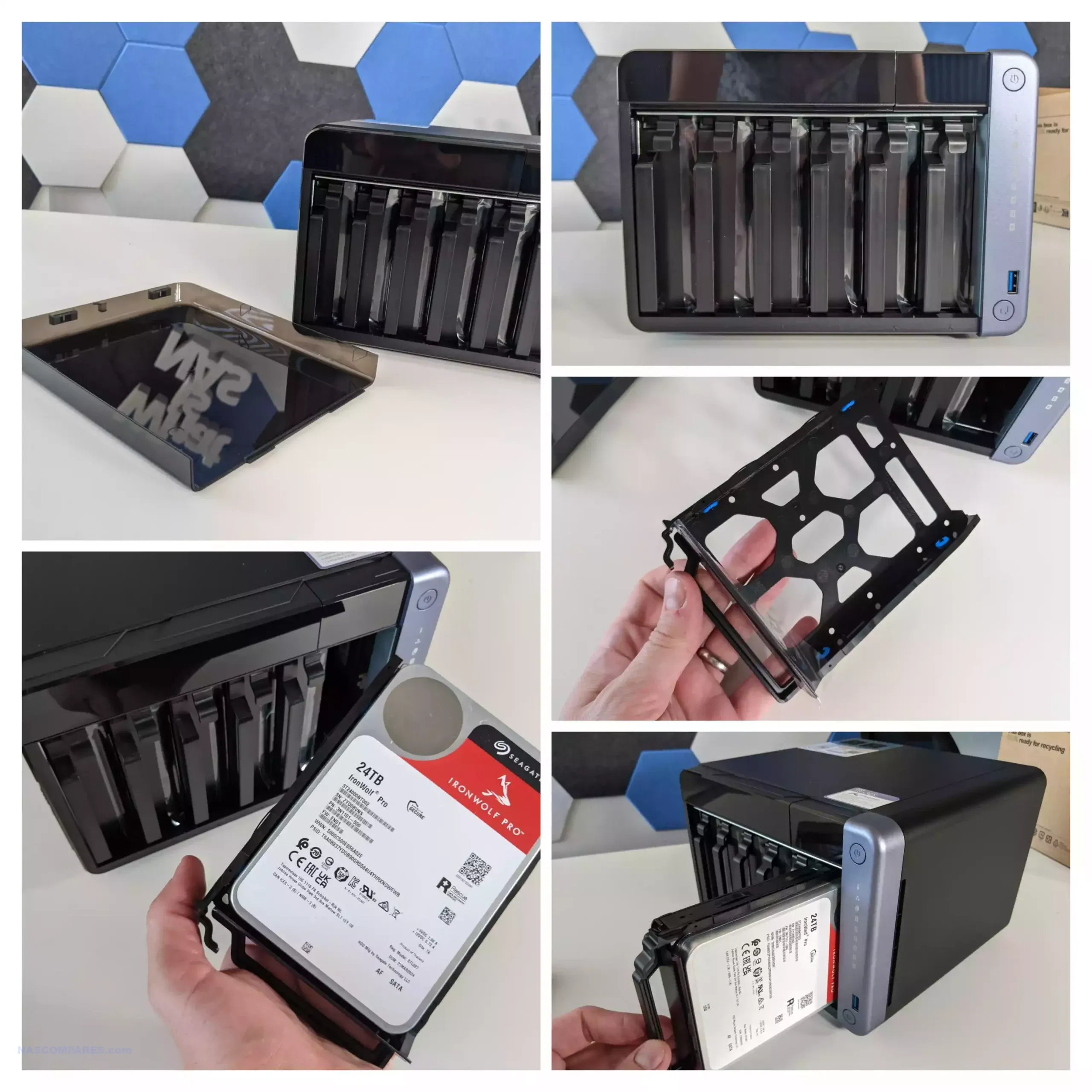
QNAP TS-632X NAS Review – Noise Levels
Given that the TS-632X is designed for small office or home use, noise levels are a critical consideration. Thanks to its ARM architecture and efficient cooling design, the TS-632X operates quietly.
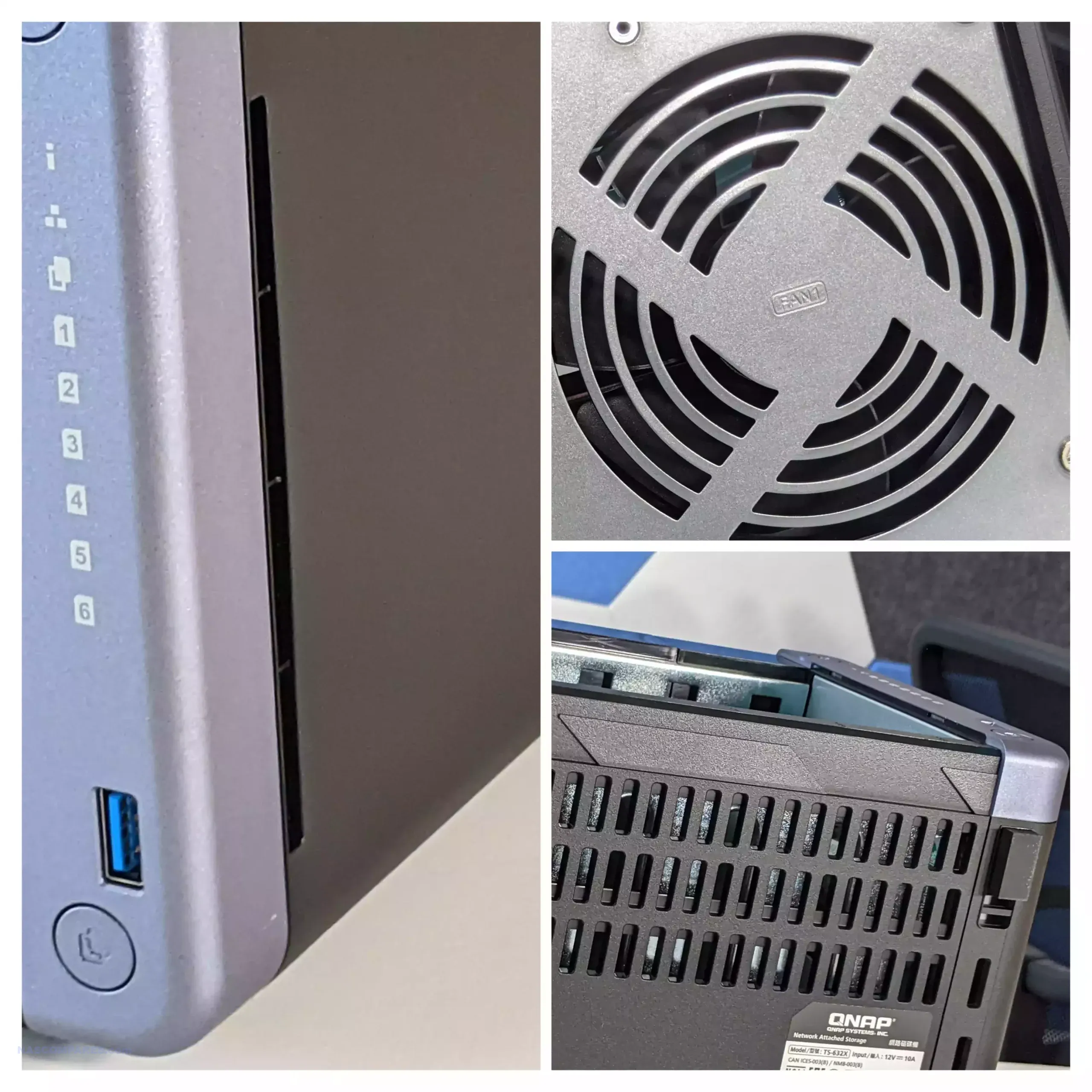
When equipped with SSDs, the noise level drops to a whisper-quiet 22 dB during idle operation. Even with traditional hard drives, noise levels remain manageable, peaking at around 35-38 dB during intensive operations. This makes the TS-632X suitable for environments where noise could be a distraction, such as in a home office or a shared workspace.
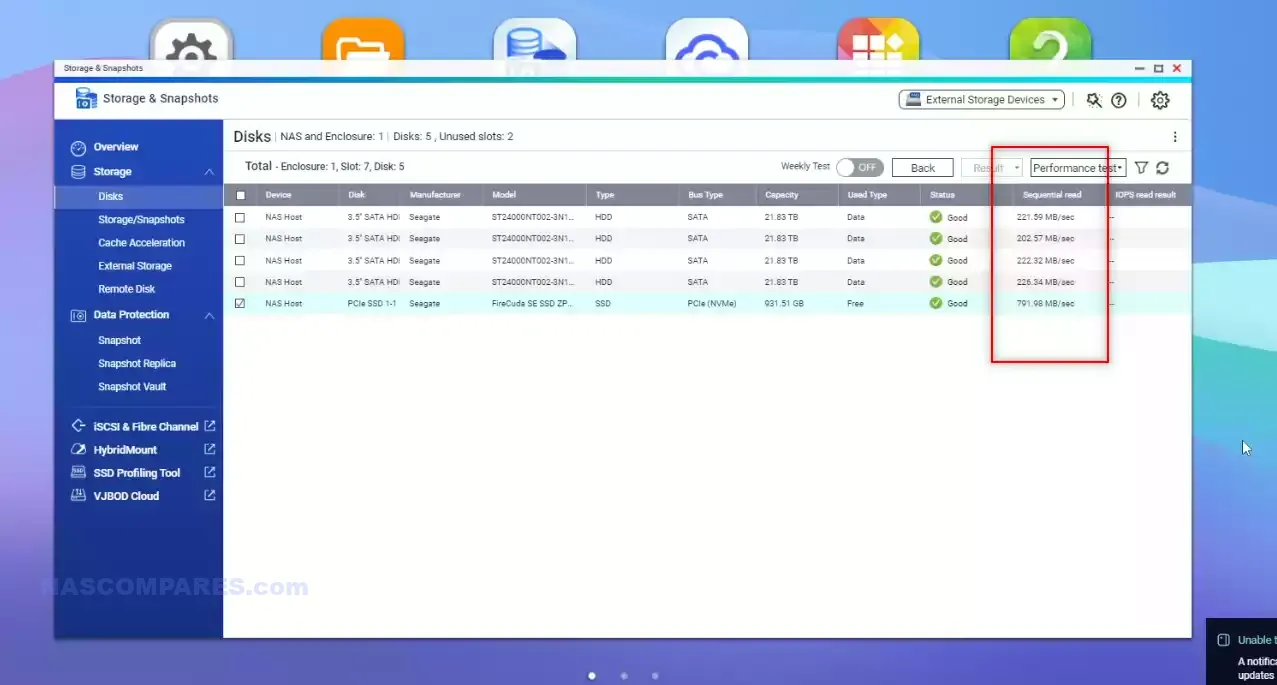
QNAP TS-632X NAS Review – Real-World Performance
To evaluate the real-world performance of the TS-632X, we conducted a series of tests using both HDDs and SSDs. With four 24TB HDDs in RAID 5, the device achieved read speeds of up to 520 MB/s and write speeds of approximately 298 MB/s in various test scenarios.
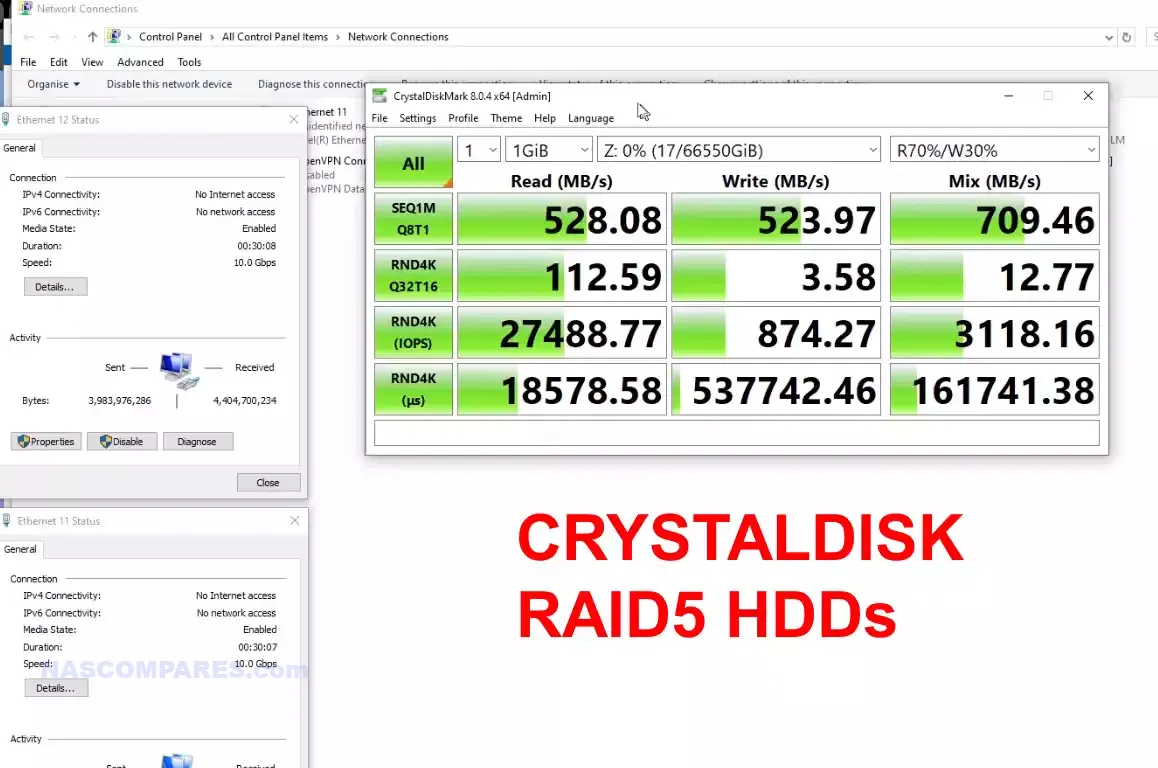
While these speeds are impressive for an ARM-based NAS with HDDs, they don’t fully utilize the 10GbE connections. However, this performance is more than adequate for typical NAS tasks, such as file storage, backup, and media streaming.
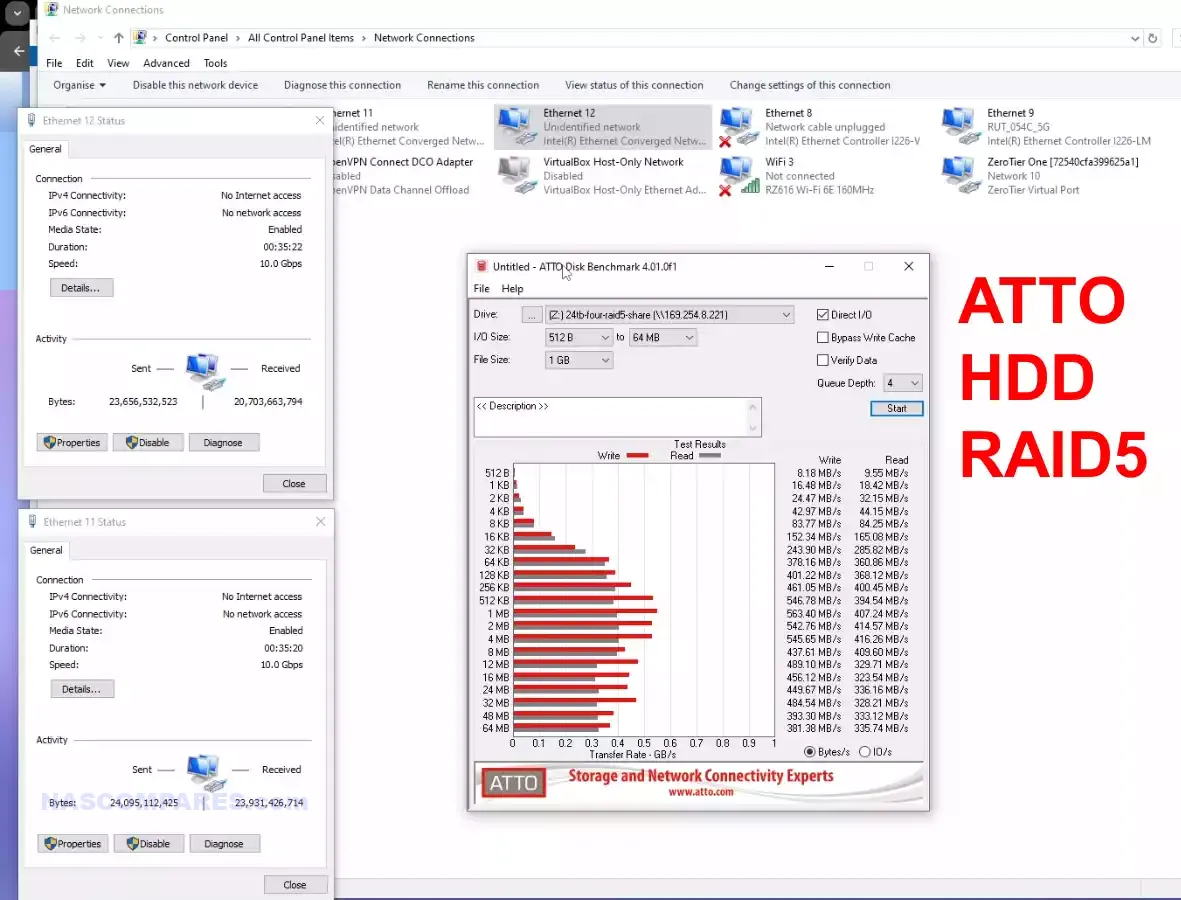
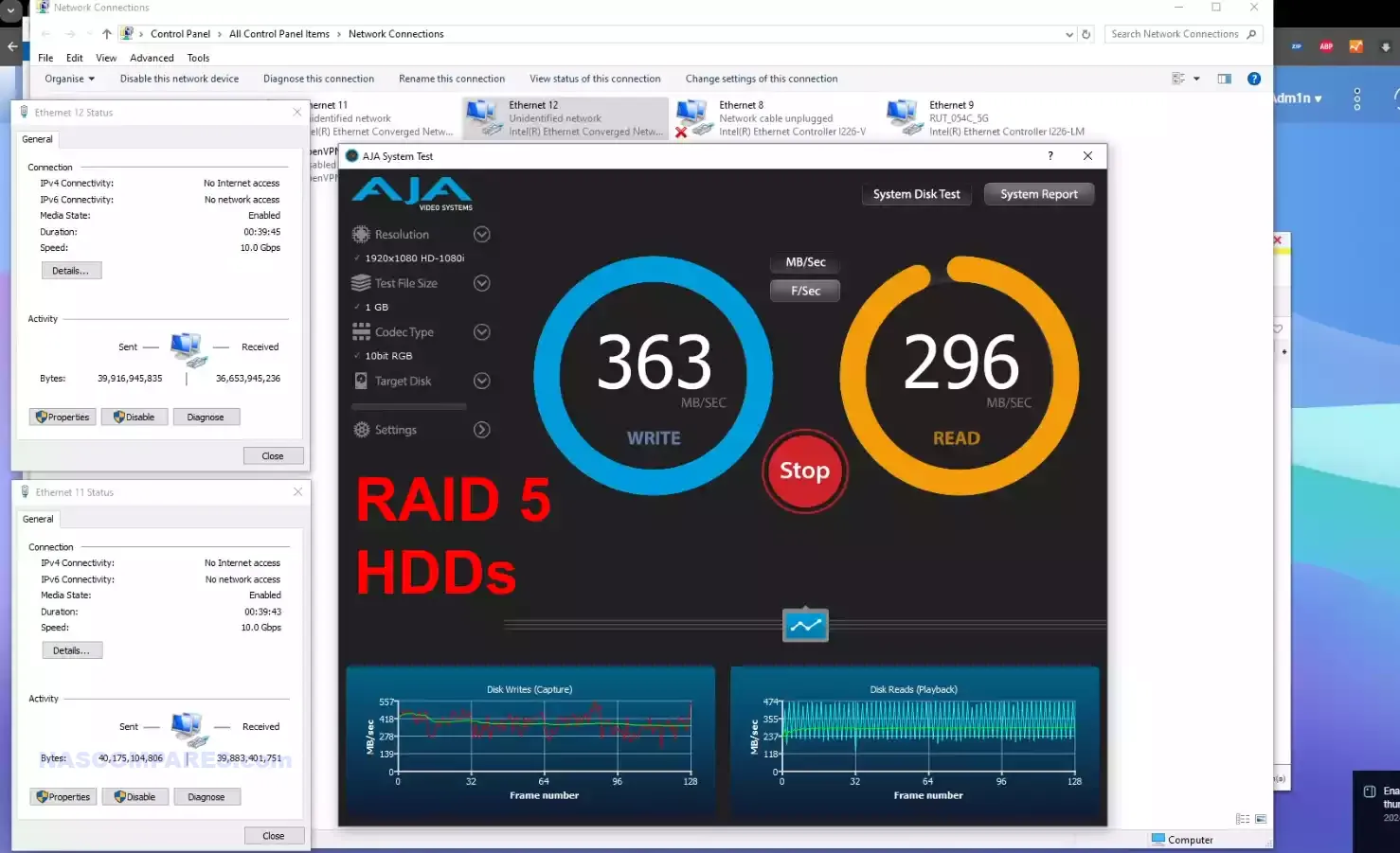
Switching to SSDs significantly improved performance. With six 500GB SATA SSDs in a RAID 5 configuration, the TS-632X reached read speeds of up to 1.4 GB/s, with write speeds peaking at 538 MB/s. But in CrystalDisk we were able to hit 2GB/s.
These figures indicate that the TS-632X can handle more demanding tasks, such as video editing and large-scale data transfers, with ease. The dual 10GbE ports and support for SMB Multichannel ensure that multiple users can access data simultaneously without bottlenecks, making it an excellent choice for collaborative work environments.
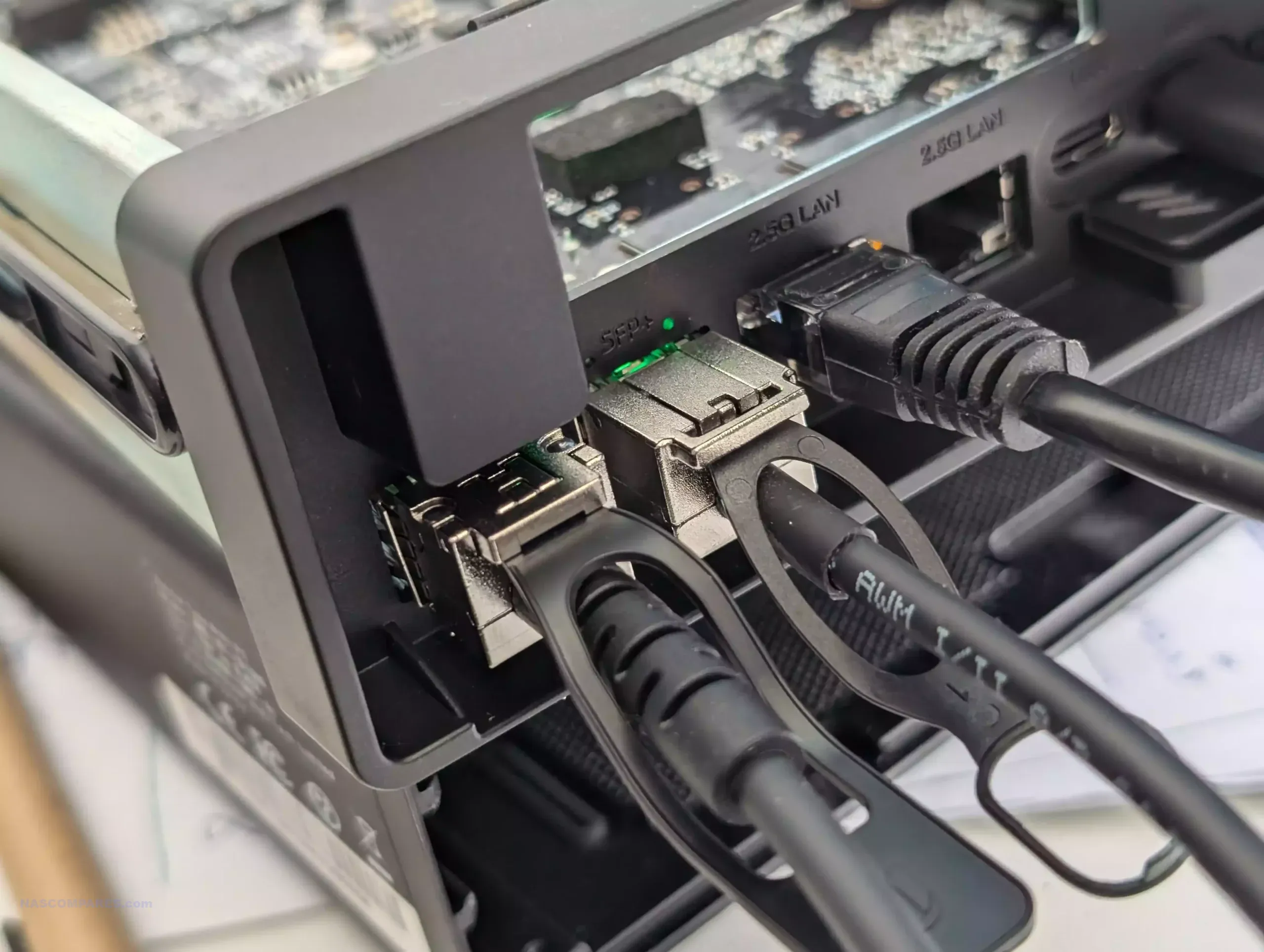
QNAP TS-632X NAS Review – QTS NAS OS
The TS-632X runs on QNAP’s QTS operating system, a versatile and user-friendly platform that offers a wide range of applications. From backup and synchronization tools like Qsync and Hybrid Backup Sync to multimedia management with QuMagie, QTS provides a comprehensive suite of tools for managing and securing data. Although QTS on the TS-632X lacks support for some of the more demanding applications available on x86-based QNAP devices, it still covers about 70-80% of the QNAP App Center offerings. This includes essential business tools like QVR Elite for surveillance and various cloud backup solutions, making it suitable for most small business needs.
QNAP TS-632X NAS Review Conclusion
The QNAP TS-632X is not going to blow anyone’s socks off anytime soon in terms of power, and that was never really the point, was it? This might comfortably be the most capable ARM-powered NAS I have ever seen (at least in desktop form), and it is a genuinely impressive feat that QNAP managed to do this for this price tag and at this scale. The $699-$749 price tag is already pretty competitive for a 6-bay expandable desktop NAS. Once you factor in that this device features two 10GbE ethernet connections to really open up that network bandwidth, and a PCIe expansion slot that lets you choose further bandwidth expansions, further storage expansions, or a little bit of both with those QNAP QM2 expansion cards, you have an impressively scalable solution here.I can only really give QNAP half points for its support of ECC memory here, as even though that is impressive for an ARM system, the fact that they don’t include ECC memory in the baseline model somewhat undercuts this advantage. QNAP has done a lot of work here optimizing their software as much as they can to do what it can on such a modest processor. And although QTS seemingly runs better here than I’ve seen it run on most ARM-powered NAS devices, the execution is still by no means flawless. They have had to clip its wings ever so slightly, removing some applications that were simply too demanding and need x86 processor support, or streamlining some other applications to be better suited to this rather more power-conservative environment. The majority of software issues I encountered were arguably in the early stages of setup, as the demands on the system hardware were at peak, but to be fair, these did alleviate over time as more domestic and pedestrian day-to-day usage became the norm.
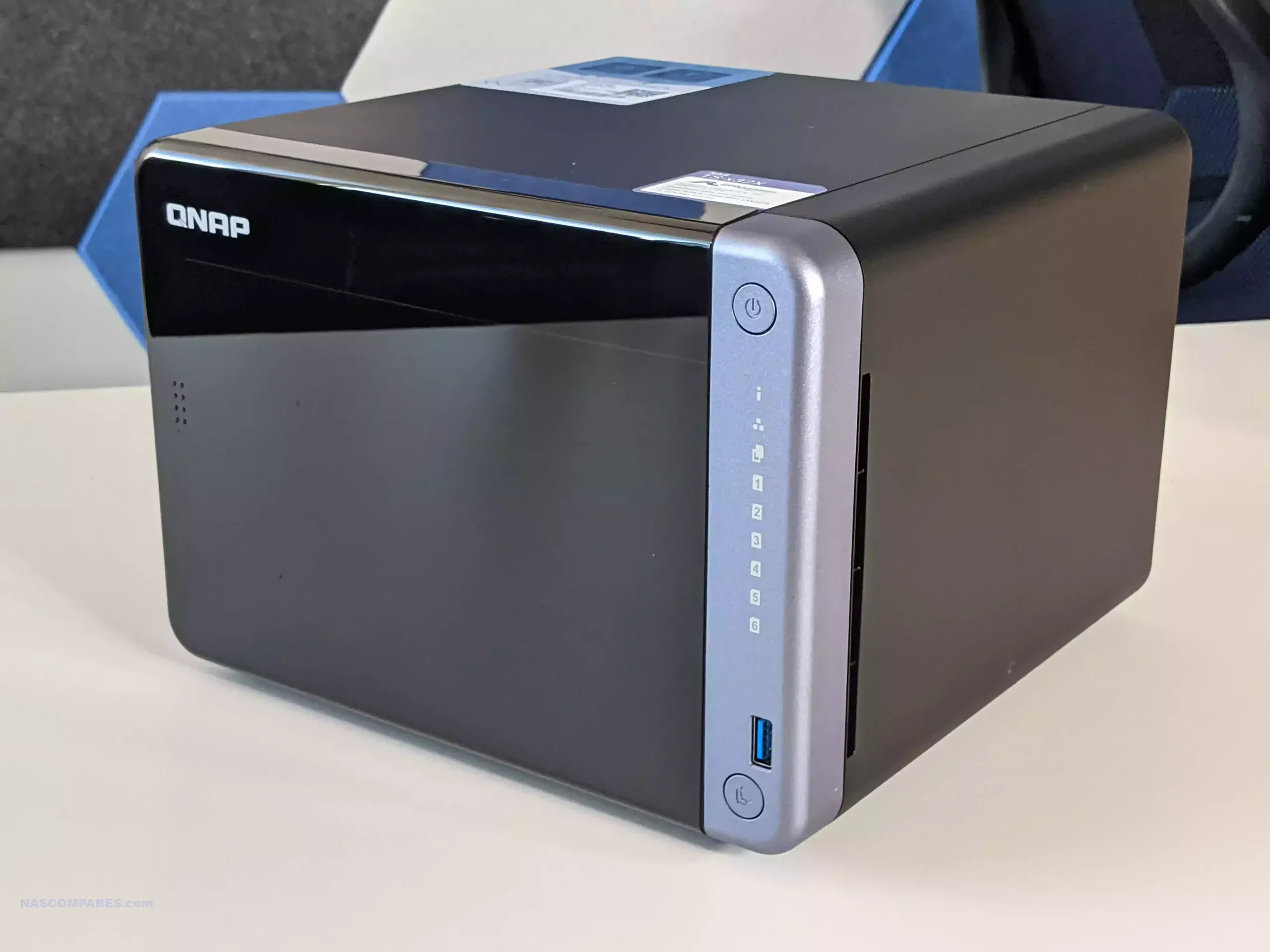
Likewise, performance over the 10GbE connections on this device was not a huge surprise, given the processor, but that does mean that those of you considering this box for live file editing over 10GbE or for constantly updating databases might find this system a little lackluster. Whereas, those that need access to an existing database as quickly as possible, or are considerably more focused on read rather than write operations, are not going to have any problems, given the almost complete dual 10GbE saturation we achieved in some of our tests (and fair play to QNAP for not hiding their lower write performance numbers on their own product pages either). As long as you understand the implications of an ARM CPU on more vigorous write workloads, there is going to be very little that disappoints you in this system. It delivers on practically every one of its promises, and it does so without harming your energy bill much either. With so many subpar ARM NAS systems on the market, it is genuinely refreshing to be able to talk about one in such positive ways!
| PROs of the QNAP TS-632X NAS | CONs of the QNAP TS-632X NAS |
|
|
Need More Help Choosing the right NAS?
Choosing the right data storage solution for your needs can be very intimidating and it’s never too late to ask for help. With options ranging from NAS to DAS, Thunderbolt to SAS and connecting everything up so you can access all your lovely data at the touch of a button can be a lot simpler than you think. If you want some tips, guidance or help with everything from compatibility to suitability of a solution for you, why not drop me a message below and I will get back to you as soon as possible with what you should go for, its suitability and the best place to get it. This service is designed without profit in mind and in order to help you with your data storage needs, so I will try to answer your questions as soon as possible.
📧 SUBSCRIBE TO OUR NEWSLETTER 🔔
🔒 Join Inner Circle
Get an alert every time something gets added to this specific article!
This description contains links to Amazon. These links will take you to some of the products mentioned in today's content. As an Amazon Associate, I earn from qualifying purchases. Visit the NASCompares Deal Finder to find the best place to buy this device in your region, based on Service, Support and Reputation - Just Search for your NAS Drive in the Box Below
Need Advice on Data Storage from an Expert?
Finally, for free advice about your setup, just leave a message in the comments below here at NASCompares.com and we will get back to you. Need Help?
Where possible (and where appropriate) please provide as much information about your requirements, as then I can arrange the best answer and solution to your needs. Do not worry about your e-mail address being required, it will NOT be used in a mailing list and will NOT be used in any way other than to respond to your enquiry.
Need Help?
Where possible (and where appropriate) please provide as much information about your requirements, as then I can arrange the best answer and solution to your needs. Do not worry about your e-mail address being required, it will NOT be used in a mailing list and will NOT be used in any way other than to respond to your enquiry.

|
 |
A Buyer's Guide to Travel Routers - GET IT RIGHT, FIRST TIME
Jonsbo N6 DIY NAS Case Review
The Best Bits (and Worst Bits) of NAS of 2025!
Minisforum MS-02 Ultra Review
Minisforum N5 NAS, 6 Months Later - Better, Worse, the Same?
Beelink ME Pro NAS Revealed
Access content via Patreon or KO-FI
Discover more from NAS Compares
Subscribe to get the latest posts sent to your email.


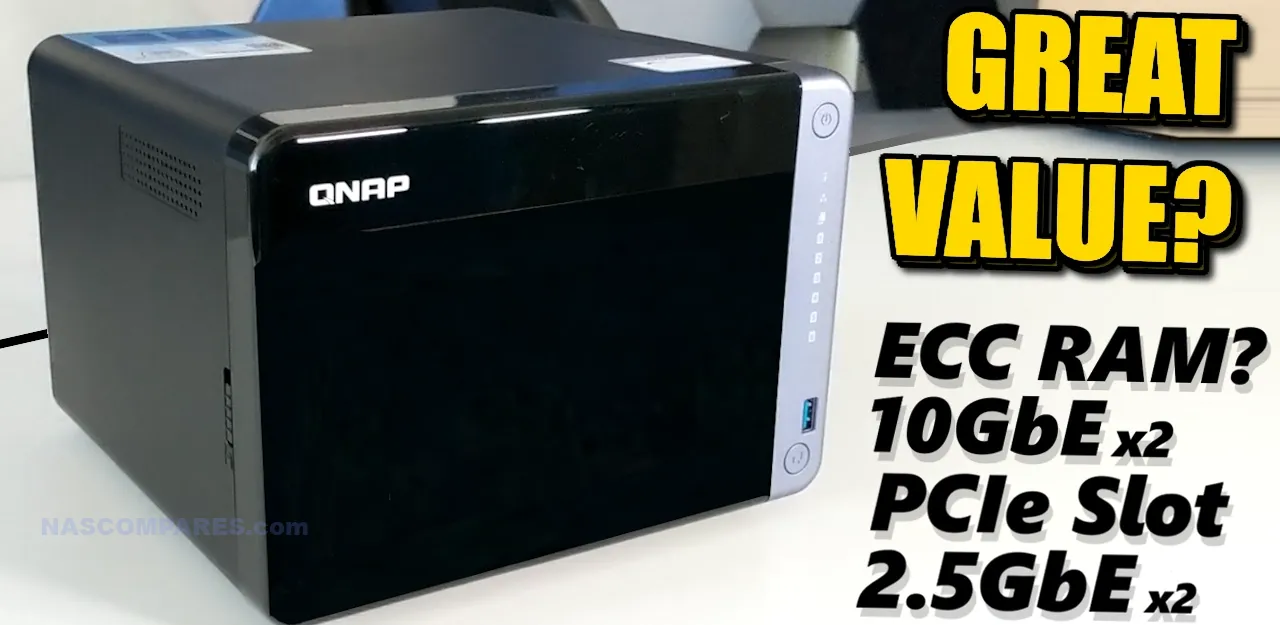
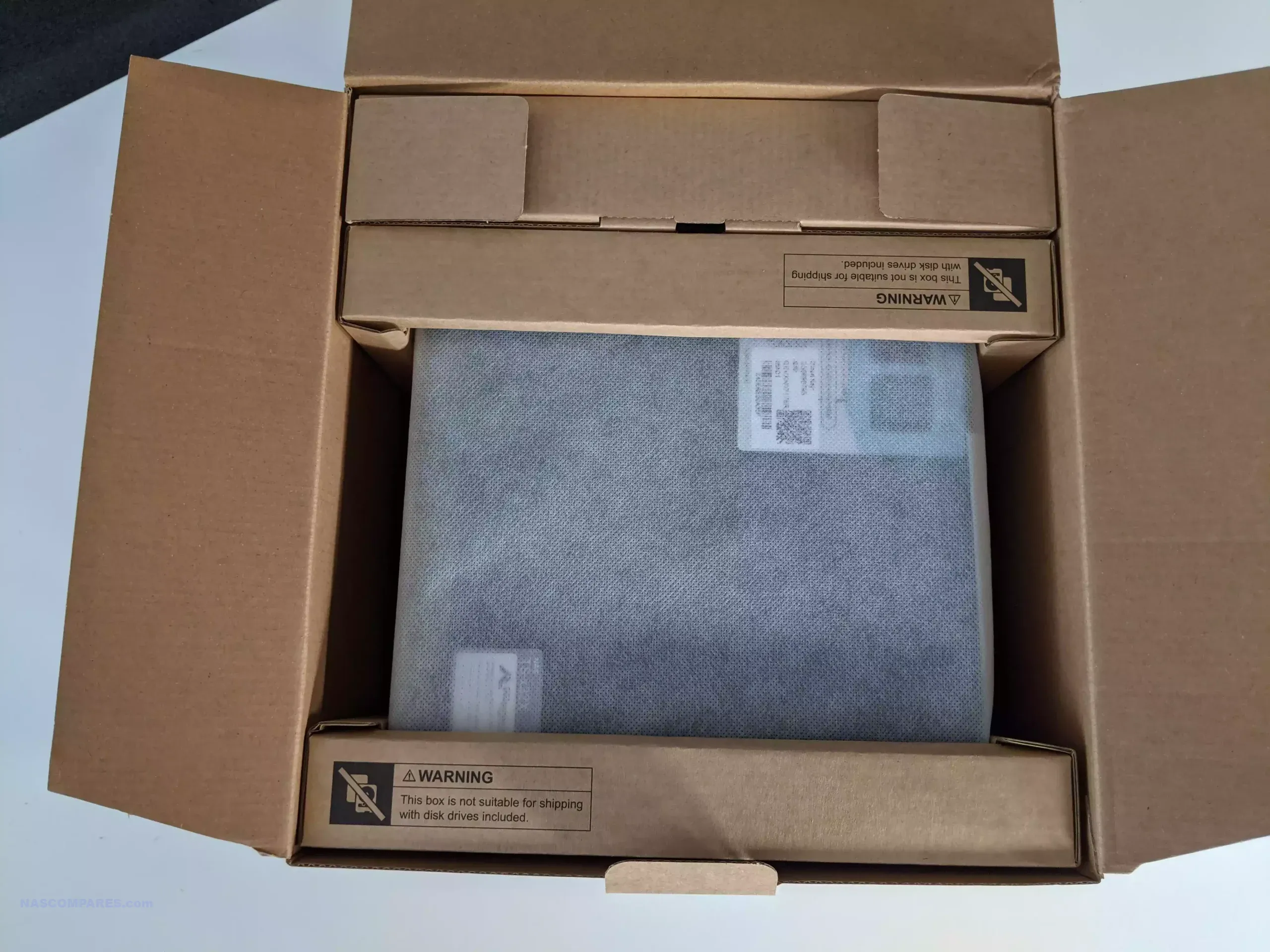




I am going to be moving from Synology to QNAP. QTS is good enough for my use cases and their NAS hardware is much up to date. Synology has really dropped the ball…
REPLY ON YOUTUBE
Thanks for this video. I had no idea the firmware update I did to my NAS was a beta. I use the Qmanager app in my phone to check for firmare updates and saw that hero 5.2 was available and so I pushed the update. It was not till I saw your video on the QTS 5.2 Beta that I checked into the version of QuTS Hero 5.2… and sure enough it’s a Beta. I can’t believe I have a Beta running.
I really can’t remember seeing a Beta warning on the app when I updated!
REPLY ON YOUTUBE
Is the N5095 in the TS-264 keeping up with the 5.2 Beta?
I’m considering getting the TS-464C2 which has similar specs and want to know if it has sufficient performance.
REPLY ON YOUTUBE
QNAP, just rolled out a new production version of QUTS hero 5.1.6 2734
REPLY ON YOUTUBE
This will be a really nice improvement. Thank you for sharing
REPLY ON YOUTUBE
Hy, love the value of information you give to NAS lovers. Please, can you give an advice for a 4-bay RAID-5 only to Store data like Documents and Video and Photo stuff with a Great Samba Setup? I doing my Self Hard to ma my self a descision to one of the many available systems out there as a NAS beginner. Thanks for your time and greats from Germany
REPLY ON YOUTUBE
TS-230 here with the new beta. 8:48 for a full reboot with only MARS and HBS3 installed.
REPLY ON YOUTUBE
Thank you. I really like the channel and appreciate it.
REPLY ON YOUTUBE
The taskbar is giving me a heart attack
REPLY ON YOUTUBE
I just upgraded my ts-464 and have to restore by using Qfinder, because the web ui is almost completely broken, a lot of menu elements do not link to anything anymore.
which is especially frustrating, since it blocks me from using the firmware menu to downgrade.
REPLY ON YOUTUBE
Updating new files on Plex runs the CPU up to 90% on 5.1..
REPLY ON YOUTUBE
I have been a user for about 8 years. It seems that FIle Station has really got awfully slow, even though from WIndows, browsing is quick. One more thing (not important), but when I upgraded my Hard drives and claimed the extra space by resizing (6TB to 12TB drives), it wiped out my playlist for Music Station. Not a big deal, but slightly aggravating……..
REPLY ON YOUTUBE
I hope it improves the SMB performance. Their last full release specifically targeted this, but it’s still not smooth or fast enough, although it did make a large improvement. My Ryzen powered NAS should perform like a computer connected to the network, but it’s never been like that, never as smooth and consistent. And why does it take so long to boot up and shut down. I think QTS is incredibly unoptimised. Yes it’s feature rich, and relatively bug free, but it’s slow as molasses doing the simplest tasks.
REPLY ON YOUTUBE